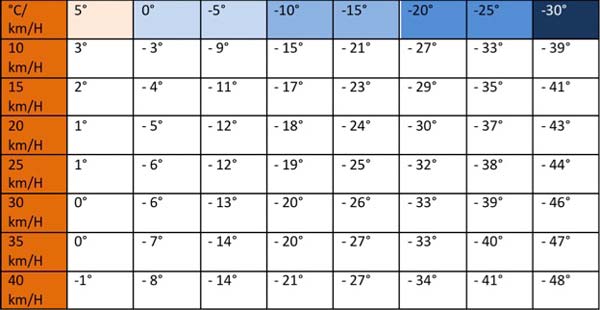There is no such thing as bad weather, only bad clothing” - Norwegian proverb
A day hike in the Bavarian Alps could take you from the altitude of 500m above sea level to around 2000m. As well as being prepared for body temperature changes due to your physical efforts, it is vital to take into account the impact the environment can have on your body temperature.
The science of dressing for hiking
Working out your clothing for hiking in comfort is a bit of a science at first and can also vary from person to person, so the best way to work it out is through experience. That said, the golden rule is dress like an onion- lots of layers that you can peel on and off and adapt effectively to your body and the environment.
The environment and you
Did you know that for every 100m of ascent the air temperature drops by approx 1°C? This means if it's a mild 15°C in the valley at 500m, at your peak of 2000m the temps could be floating around a fresh 0°… add a bit of wind into this and suddenly the windchill effect (describing the difference between the measured air temperature and the feels-like temperature in connection with the wind speed) comes into play. For a light 10m/hr breeze suddenly the 0° temp suddenly feels like -3° and a stronger 30km/hr wind will make you feel like its closer to -10°. Now imagine what that feels like with a bit of rain in the air…. you don’t need to question why packing waterproofs and windproofs is an essential part of your safety and wellbeing in the mountains.

Windchill factor
The science of layering
Actually 90 % of our energy (from nutrition and oxygen) is needed to regulate our body heat and only 10% for muscle functions… this means getting it wrong - causing our body to overheat or overcool, means energy sapped away from getting places to just keeping our body temperature stable.
As we exercise the more our muscles work, the more heat we make, which in turn needs to be cooled. Blood is pumped into our skin and the temperature of our skin increases and sweat forms. These water droplets evaporate on our skin providing a cooling effect.
You are maybe familiar with this feeling. You are chilly at the start of a hike and keep your jacket or fleece on. As you start to go uphill, you get warmer and warmer and sweat more and more. When you stop to have a break you get cold quickly from the cool damp feeling from your clothing.
So how can you prevent this?
One rule many swear by, is that you should always feel a little cool when you are starting out ie. pack away the warmer layers just before you start. Personally, I’m not a fan of feeling cold, so I will walk approx 10mins with this warmer layer and then stop to take the warmer layers off.
As mentioned this is the benefit of the onion rule or layering… lots of thinner layers allow more flexibility as well as trapping air nicely between each layer forming a warm air cushion. Hence more warm air cushions on top of one another equal greater overall warmth.

It's all about the layers
The general principles of layering are as follows:
1. The Base layer:
- vest/ t-shirt (winter hikes long-sleeved)
- longjohns (most likely only worn in Winter but should be carried for extra warmth on high mountain adventures)
- socks
This is the first layer directly in contact with the skin and the layer to wick away moisture and lock in dry warm air.
- Merino, synthetic materials commonly found in sports and outdoor clothes
- Cotton (“is rotten”) - soaks up moisture and cools the body as it evaporates, also a poor insulator when dry
2. Mid layer:
- hat
- thin gloves
- light jacket/ fleece
- trousers
This provides an insulating layer and can be adapted according to the conditions (e.g. in summer a thin zip-neck top might be enough whereas in winter a thick windproof fleece or down jacket would be better).
- Synthetic, zip-neck top, fleece, merino wool jacket
- Cotton - same as above and heavy!
3. Outer layer:
- waterproof jacket
- waterproof trousers
- gaiters
- thick gloves or mittens
This final layer is the waterproof and windproof layer which is the most important in extreme weather conditions. The aim of this layer is to both keep the water out and heat in whilst also releasing moisture and excess heat from the body. Cold water next to the body can cool very quickly and it is therefore essential to have a hood on a jacket to protect the head from cooling.
- Recognised as waterproof materials e.g. GoreTex, Eventim, PU, Sympatex
- Rainproof, showerproof, no hood
Depending on the conditions and physical exertion, all or different layers may be worn in different combinations. e.g. during the ascent on a wet day just base layer and waterproof adding the mid-layer for the descent.
Another solid principle is to always pack a spare dry base-layer. Switching out of your damp base-layer for a dry one can make all the difference!
Was this article helpful? Read below for further hiking tips:
Popular posts.Want to join us on a tour? Then check out our summer events:
Trail Fit ClubWild Switzerland Trek, Switzerland













